CMS has issued its first evaluation report for Primary Care First. The report offers a window into:
- key attributes of advanced primary care practices;
- strategies for lowering costs and reducing hospitalizations; and
- new strategies that signal practice transformation.
Future PCF program evaluations will include which practice implementations worked and how they improved quality.
In the meantime, even if your medical group is not a PCF participant, you can glean insight into what CMS is looking for as it evolves its Alternative Payment Models and how practices committed to value-based care are prioritizing and evolving their practice transformation strategies.
First, some background on PCF.
PCF: Focus areas, risk models and payments
PCF is designed to improve care quality and patient experience, increase access to advanced primary care services and reduce expenditures. PCF builds upon CMS’s Comprehensive Primary Care Initiative (CPC Classic) and Comprehensive Primary Care Plus by adding risk and including two cohorts: participants for years one (2021) and two (2022).
PCF has three main program features:
- Five comprehensive primary care functions. These include patient access and continuity, care management, care comprehensiveness and coordination, patient and caregiver engagement and planned care and population health.
- Upside and downside risk for common primary care services. The degree of risk is based on one of four risk groups that CMS assigns to a practice based on its average Hierarchical Condition Category score for its Medicare fee-for-service beneficiaries.
- Three payment components. Practices receive flat fees for primary care office visits; a prospective, population-based payment of $28 to $175 based on practice HCC risk group; and a performance-based adjustment ranging from -10% to + 50%.
Future PCF design will account for complex or seriously ill patients.
Important PCF results
While reports about which practice strategies worked best aren’t yet available, CMS’ initial PCF evaluation report reveals one key takeaway: It pays to participate in APMs, even as you are evolving your care strategies and testing new ones.
Average, year-one PCF payments were approximately 20% higher than the Medicare physician fee schedule. This included the population-based payment component mentioned above — which totaled $190 million from CMS and provided practice revenue predictability according to PCF participants.
Why PCF matters for all medical groups
Medical groups need to understand where their peers are in terms of practice advancement, including those groups that want to advance their value-based care outcomes but may be sitting on the APM sidelines.
For example, 90% or more of PCF practices reported they had the following top five advanced care capabilities:
- 24/7 care access informed by real-time EHR data (98%);
- episodic care management (97%);
- patient empanelment and patient engagement around quality improvement (both 94%);
- patient risk stratification and a systematic approach to patient identification for advanced care planning (both 92%); and
- hospital follow-up after 72 hours (90%).
Increasing the use of available data and enhancing HIT were two activities that most practices planned to improve.
The importance of data and HIT
There are few, if any, medical groups that get the most out of their data, whether they participate in APMs or not. Doing so while expanding HIT capabilities often requires staff bandwidth and expertise that most do not have in-house.
Practices that want to transform need a partner that turns data into insights. For our PCF clients, DataGen can:
- track PCF program revenue, care interventions and claim-based quality measures;
- discover patient care access patterns outside of your network;
- identify leakage by beneficiary, practitioner, and location; and
- monitor the impact of care interventions.
If your facility is interested in PCF or similar models, DataGen can help assess your baseline care practice capabilities, compare them to APM model participants and analyze how your practice’s current risk coding could affect your payment incentives.
PCF is one of six CMS Alternative Payment Models that DataGen supports. Contact us today to see just how prepared you can be for the value-based care of tomorrow.


Comments
Post a Comment